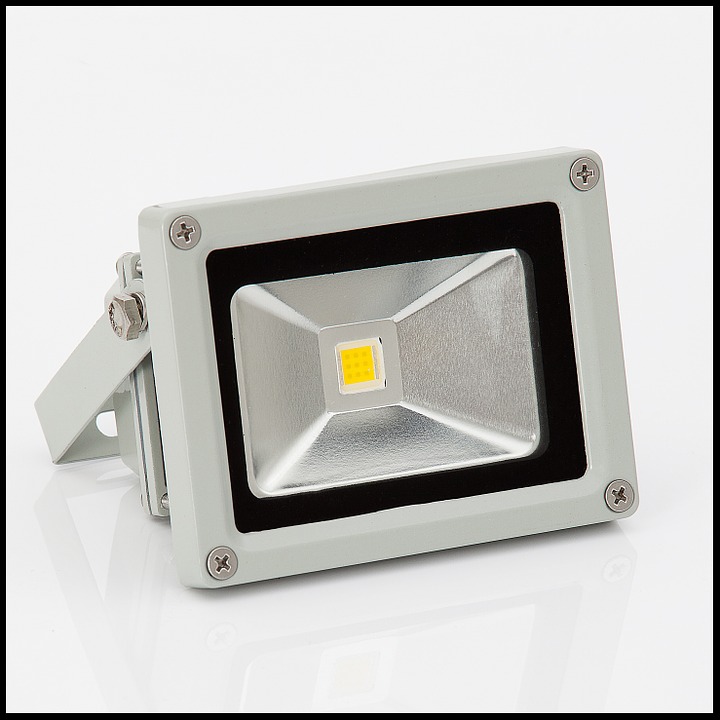Comparison of LED's and traditional sodium lamps
Comparison of LED's and traditional sodium lamps
At present, China is creating a resource-friendly and environmentally friendly society and the concept of "green lighting" gradually gains popularity. With the continued development of science and technology, the rapid development of semiconductor materials application technology, low-power LED light sources have been widely used in landscape lighting, and high-power LED lighting fixtures have attracted more and more attention.Light emission principle with LED:
The LED (light emitting diode), a light emitting diode, is made of a Group III-IV compound and is a solid-state semiconductor device that can directly convert electricity into light. The heart of the LED is a semiconductor tile. The semiconductor disk consists of three parts, part of which is a P-type semiconductor in which holes dominate and the other end is an N-type semiconductor. When current is applied to the disk through the cable, the electrons and holes are pushed into the carrier well. In the quantum well, electrons recombine with holes and then emit energy in the form of photons. This is the principle of LED light emission. The wavelength of the light, which is the color of light, is determined by the material that forms the PN compound.Principle of high-pressure sodium lighting:
The high pressure sodium lamp uses the electric arc between the electrodes at both ends of the arc tube after it is energized and sodium amalgam in the tube is heated to evaporate to mercury vapor and sodium vapor due to the high arc temperature and the electrons are emitted from the cathode, move towards the anode when the impact is released. The person of matter, which causes it to acquire energy to produce ionization or excitation, and then returns from the state of stimulation to ground. or from the ionized state to the excited state and then back to the base state in an infinite circle. At this time, excess energy is released in the form of light irradiation. It produces light.The LED high-intensity LED is a new lighting method that makes lighting demand by illuminating the LED group from low-voltage DC and has high brightness and good color performance. In addition, since the entry of the street LED is of low-voltage DC, it may be The combination of solar energy makes the street LED solar lamps become a possible way of future road lighting.
1. On the analysis and comparison of energy efficiency
The lighting installation power should be compared between the two according to the same level of illumination (brightness) and close to the standard lighting quality. Due to the high brightness of high-pressure sodium lamps (250 ~ 400W), the luminous efficiency is up to 130 ~ 1401m / W, while the low power lamps (100 ~ 150W) are about 80 ~ 1001m / W and high power LEDs are now used. The street lamp uses the more 1WLED tube, its light output is similar, so it should analyze the high-power street lamp and the low-power street lamp, respectively.
(1) High Power Street Lamps (≥250W): High-pressure sodium lighting effects are high. Consider ballast loss, lamp efficiency and track use If the overall performance is 0.55, the effective light output of the sodium lamp is about 70 ~ 751m / W. and the effective light output of LED street light is today about 621m / W in the United States and the best domestic company has reached 56 ~ 581m / W. Therefore, the ancient city of Runjing road lamp set for high power road lights, the current LED light energy efficiency is lower than sodium lamp.
(2) Low-energy lamps (≤ 150W): The effective light output of sodium lamps (total output of 0.55 included) is approximately 45 ~ 551m / W, while the LED is still 56 ~ 581m / W, from sodium lamps. % ~ 20% to 30%. From the above analysis, it can be seen that for low power (≤ 150W) for branches, LED lamps can save up to 10% ~ 30% energy compared to sodium lamps and high power is still lower than that of sodium lamps. Therefore, those who claim that LED lights are more energy efficient than high-pressure sodium lamps can save 50%, 60%, etc., are obviously excessive and speculative. We must adhere to the scientific analysis and the principle of seeking the truth from the facts, otherwise, it is easy to mislead users and the general public.
2, source color light in street lighting resolution
The correlation of the color temperature (TCP) of the high-pressure sodium lamp is about 2100K, which is warm color temperature. The color rendering index (Ra) is only 23 ~ 25 and the color rendering is low. while the color temperature of the LED street lamp is now longer than 5300K, which is cool color temperature, better The product has Ra to 70 ~ 80 and good color rendering. As a fast-moving road and the central road for cars, the yellowish-yellow sodium lamp is slightly better than white light to see the distance between 90 and 160 meters ahead of the road surface, especially for fog and dusty conditions. More advantages. For roads such as pedestrian walkways, pedestrian shopping streets, residential shops and other roads, the color rendering of LED street lamps is better than that of sodium lamps and the state of people's distinction is clearer and has advantages.
3, economic analysis and comparison
High-pressure sodium lamps, each about 1200 ~ 1500 yuan; current LED lights, depending on the strength of different sizes, the price difference is greater, about 4000 ~ 8000 yuan. Regarding the status quo, LED street lights are obviously too expensive and their value is 3 to 5 times. As before, LEDs with less than 150W can save energy by 10% ~ 30%. Each year, the electricity consumption per lamp is about 50 ~ 150KWh, so it is impossible to recover the cost of buying lamps. It can only be expected that in the coming years, LED development trends will gradually reduce their price, further improve energy efficiency and compare their economic performance.
4, life service analysis
Lifetime comparison should be based on the lifetime of the lamp. High-pressure sodium lamps include light sources, electrical components (mainly ballasts, actuators) and lamps. Sodium lamps are used for the average lamp life of 3 to 5 years old, inductive energy saving chokes are not less than 20 years, and so they are lamps. However, the life of the LEDs is not experienced. Existing businesses are known as 50,000, 60,000 hours and there is no reliable base. Requirements formulated by the American Energy Star are divided into at least 35,000 hours and 25,000 hours. The main reason is that LED chips have a long life. However, they have much to do with temperature, heat dissipation, and other factors after packaging. There are also electronic devices that drive circuit devices. The life problems of components such as capacitors often only 8000h to 10000h. Therefore, as a whole, the life of LED driving lamps cannot be compared to that of sodium lamps.
5, keep comparing the performance
Users represented by urban street traffic control departments are more concerned about the maintenance performance of street lamps. According to the analysis, the maintenance performance of the sodium lamp is good. The lamps must be cleaned only, they do not need to be replaced, the ballasts are rarely replaced and the light source changes every 3 to 5 years. It is also very convenient. LEDs, LED tubes, units (including lenses, etc.), power supplies, etc. have a high probability of damage to parts and accessories and are difficult to maintain and replace. They are likely to be replaced altogether and the cost is high. solve. LEDs do not have standards to follow and are unfavorable for supply and order, as well as for use and maintenance. In summary, we believe LED lighting is a new thing that has emerged in recent years. With the development of the LED industry, there will be more growth and broader prospects. However, there are still many problems in the current state of implementation. Despite the fact that a small number of LED light bulb research, development and production companies have made great efforts to solve certain technical problems and promote the promotion of the product, they are not interested in the industry elite. However, as a whole, the level, quality, diversity, and variety of LED street lighting products are very different. There are no standards to regulate, some are fast, the energy efficiency of the products is not high, the heat dissipation problem is not working well, the light damage is long and the life span is not long. , There is no reasonable distribution of lighting, can not meet the requirements for promotion. We hope that scientific research, teaching, design agencies, production units, and production companies will work together to solve various technical problems, improve product levels, shape and improve a set of standards, and prepare for promotion and implementation. In promotion and implementation, we must follow gradual and smooth progress, starting with the pilot, gathering experience and continuing to improve. we need to start with low-power LED bulbs for branch roads and residential streets and then develop road poles and high-power street lights to move on gradually. Regardless of which light source or luminaire it is used, it must meet the requirements of the City Lighting Design Standard (CJJ45-2006), including brightness, brightness, smoothness, and other quality indicators. Be aware of the principle of looking for truth from events, avoid excessive exaggeration, avoid comparisons and avoid lifting yourself and avoid pushing others, insisting on the quality of lighting, lighting, insisting on the combination of technology and economy, and protection the environment, and avoiding excessive hype. Service, user-responsible, do not mislead the user, but also a real look of the user. Do not swear to "replace" which light source. After a few years or even many years, efforts will have to be continually improved to become a new type of high-quality and efficient light source and road lighting fixtures for users to choose from. Let the user speak and let the user evaluate it. Luminous efficiency: The unit is lumens per watt Lm / w. That is, the ability of an electrical light source to convert electricity into light energy is expressed by the light output emitted divided by energy consumption.
6, light output
The light output of LED light sources is currently around 75 Lm / win the US and Japan and around 65 Lm / w in domestic production. The light output of the HPS light source is about 100 Lm / w and the emitted light flux per W is 25 to 35 Lm / w higher than that of the LED. 400w high-pressure sodium lamp with light output up to 120Lm / w.
7, cloudy
In road lighting, there is much misunderstanding about the penetration of LEDs for heavy fog. Most people believe that the penetration of LED driving lamps is lower than that of traditional sodium light bulbs. This is a misconception. Most people mostly see some information on the Internet or see the feelings of some of the senses on the road. They did not carry out scientific assessments and analyzes and believe that the light penetration of LED street lamps is poor. This article will make a scientific analysis of this situation.



Comments
Post a Comment